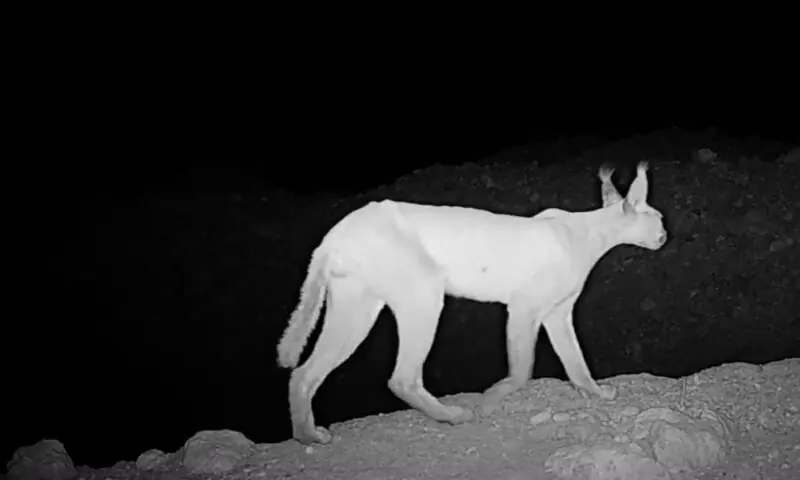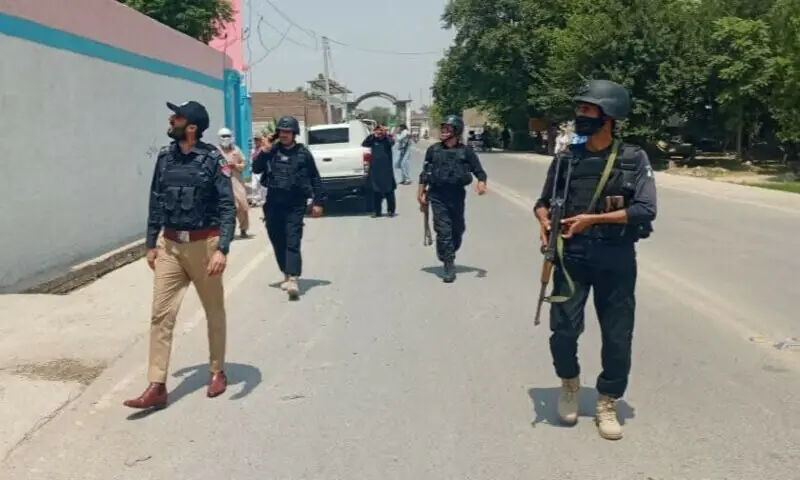In the dry hills west of Karachi, a caracal moves silently across rocky terrain, its long, black-tufted ears twitching at every sound. A hidden camera captures the fleeting moment and offers rare evidence that one of the country’s most elusive wild cats still survives.
The caracal, a medium-sized wild cat native to the arid regions of Africa, the Middle East, Central Asia and South Asia, is now critically endangered in Pakistan. Wildlife experts warn that habitat loss, increasing human encroachment and retaliatory killings have pushed the species to the brink of local extinction.
“Local people kill the cat to protect their sheep, goats, deer and other small animals, or in retaliation for hunting small livestock,” said wildlife expert Saeedul Islam. anadolu.
Hunting for the illegal pet trade poses another threat.
“This has left the animal population at only a few hundred, not even a thousand, in Pakistan,” he said.
Javed Mahar, conservator of the Sindh Wildlife Department, said the caracal still exists in parts of Sindh and other provinces, but the absence of official data makes it difficult to assess its population.
One estimate puts the number between 100 and 200.
Typically nocturnal and very secretive, the caracal is a solitary carnivore that feeds on birds, rodents and small mammals. It is known for its long legs, tufted ears, and remarkable agility when hunting.
The species is on the verge of extinction in North Africa, critically endangered in Pakistan, and endangered in Jordan, although populations remain stable in parts of central and southern Africa.
New hopes for survival
In Pakistan, the species is clinging to survival in the Cholistan Desert in Punjab, the Kirthar range in Sindh and the highlands of central and southern Balochistan, said Zafeer Ahmad Shaikh, head of the Indus Fishing Cat Project (IFCP), a wildlife conservation group active in the region for more than four years.
Conservationists recently recorded a caracal on the southern outskirts of Kirthar National Park, near Karachi, offering rare visual evidence that the once widespread species still exists there.
“We spent weeks trying to detect this rare species, which we thought no longer existed in this part of Pakistan,” said Zohaib Ahmad, one of the conservationists who set up a camera trap after reports of a caracal crossing a nearby road in daylight in January.
“This is the first recording of a caracal with a camera trap in years,” he said. anadolu. “It provides strong evidence that caracals are still present in Pakistan.”
The footage, recorded by IFCP, shows an adult male caracal wandering through the mountainous terrain of Kirthar National Park. Of about 400 clips collected with that camera over two weeks, it was the only one that showed a caracal, Shaikh said.
Another recent sighting involved a juvenile killed by local residents in the same area, he added.
Pressures driving decline
Jamshed Chaudhry, a World Wildlife Fund official in Pakistan, said caracals are rapidly losing their natural habitat due to expanding agricultural land, urban development and overgrazing, all of which are making it difficult for them to find food and shelter.
“Caracals are also struggling to survive as their prey (rodents, birds and reptiles) are declining due to habitat loss, overgrazing and hunting, leaving them with little or no food,” Chaudhry said. anadolu.
He added that roads that cut through caracal habitats pose another danger, as the cats are most active at dawn and dusk, when drivers are less likely to see them in time.
While not common, Chaudhry said, the species is sometimes hunted for its fur or captured for the illegal wildlife trade, adding more pressure to an already small population.
The caracal receives limited legal protection in the country and little specific conservation attention, allowing its decline to go largely unnoticed.
The species has largely remained outside major wildlife protection programs, although WWF-Pakistan and other groups have occasionally recorded its presence during biodiversity surveys in Cholistan, Thal and parts of Balochistan.
It is protected by the Sindh Wildlife Act, which prohibits poaching and poaching, although its enforcement remains a challenge.
Ecological balance
Experts highlight that the caracal plays an important role in maintaining ecological balance.
“Their regulation of prey species is essential to maintaining biodiversity and overall ecosystem health,” Chaudhry said.
Mahar echoed this sentiment, explaining that the caracal helps maintain the balance between prey and predators in ecosystems.
As a predator, it regulates the populations of its prey, including rodents and small mammals, a natural balance that prevents overgrazing, crop failure, and the spread of disease.
“Therefore, protecting caracals not only conserves a unique and elegant predator, but also ensures the stability of entire ecosystems of which they are a part,” Chaudhry said.








